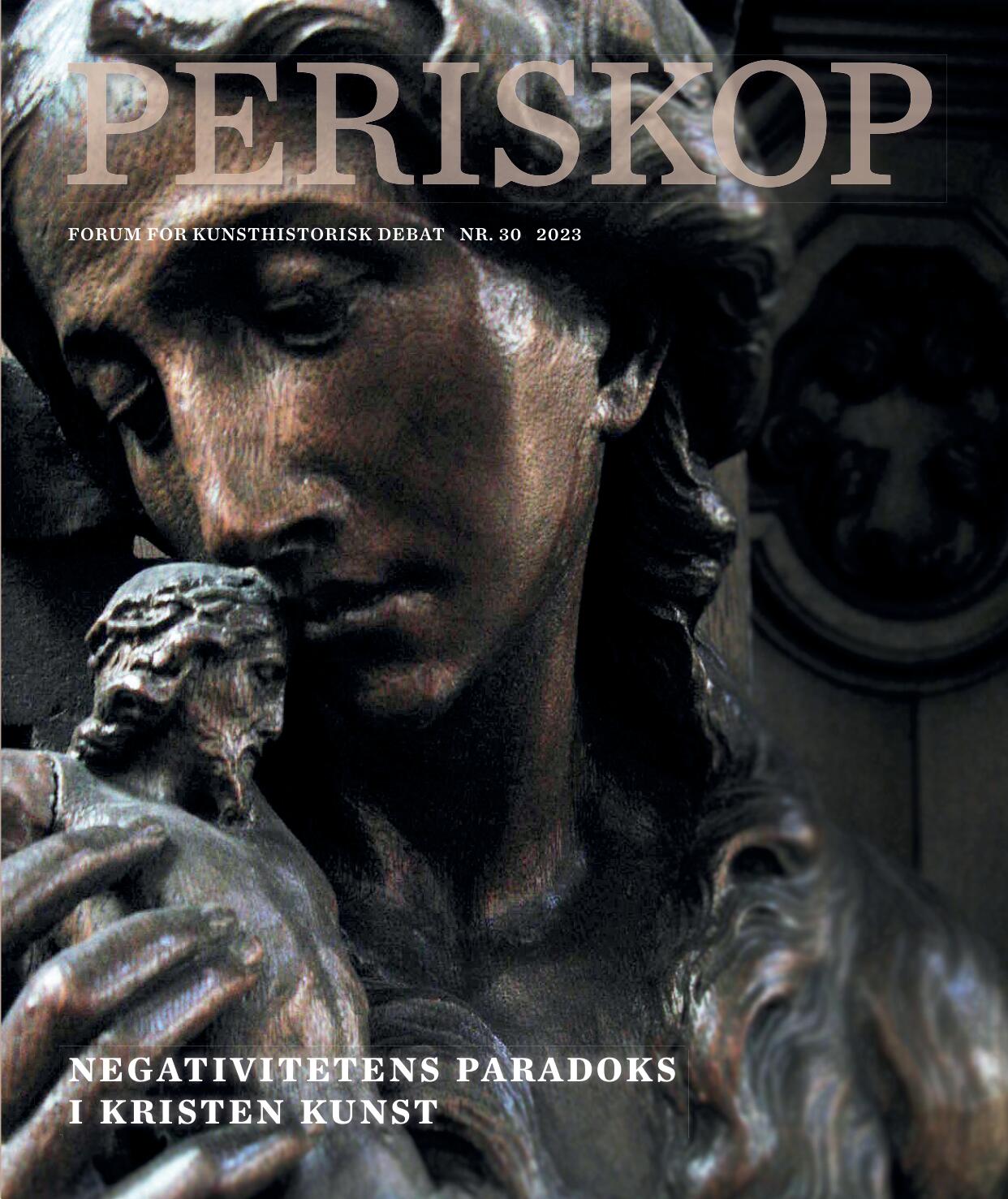“Et lille, firfodet Dyr og en Hovedløs mand”
Et præludium over negativitetens æstetik i den tidlige danske middelalder
DOI:
https://doi.org/10.7146/periskop.v2023i30.141987Resumé
This article proposes a new approach to medieval imagery. By taking as a case a relief carving showing a disembodied head, a headless body, a horse and foliage, it argues that this seemingly unintelligible motif can be interpreted based on an approach where the human elements do not dictate the reading alone, as in previous analyses, but that non-human components carry a meaning-driving function as well. The article points out how scholarly approaches to pre-modern imagery, by definition, are culturally conditioned and rooted in the conceptual framework of modernity. It argues that the tendency to understand decapitations and public executions as unilaterally negative cannot be applied to the Middle Ages. Implementing instead a step-by-step shift in the interpretative perspective, the article reaches an understanding of the relief as a representation of a deconstructed anthropomorphic knightly identity where the man and the horse represent the Christian self-sacrificing death, literally and/or morally.
Downloads
Publiceret
Citation/Eksport
Nummer
Sektion
Licens
Copyright (c) 2023 Line Melballe Bonde

Dette værk er under følgende licens Creative Commons Navngivelse (by).
Forfattere, der publicerer deres værker via dette tidsskrift, accepterer følgende vilkår:
- Forfattere bevarer deres ophavsret og giver tidsskriftet ret til første publicering, samtidigt med at værket 12 måneder efter publiceringen er omfattet af en Creative Commons Attribution-licens, der giver andre ret til at dele værket med en anerkendelse af værkets forfatter og første publicering i nærværende tidsskrift.
- Forfattere kan indgå flere separate kontraktlige aftaler om ikke-eksklusiv distribution af tidsskriftets publicerede version af værket (f.eks. sende det til et institutionslager eller udgive det i en bog), med en anerkendelse af værkets første publicering i nærværende tidsskrift.
- Forfattere har ret til og opfordres til at publicere deres værker online (f.eks. i institutionslagre eller på deres websted) forud for og under manuskriptprocessen, da dette kan føre til produktive udvekslinger, samt tidligere og større citater fra publicerede værker (se The Effect of Open Access).


